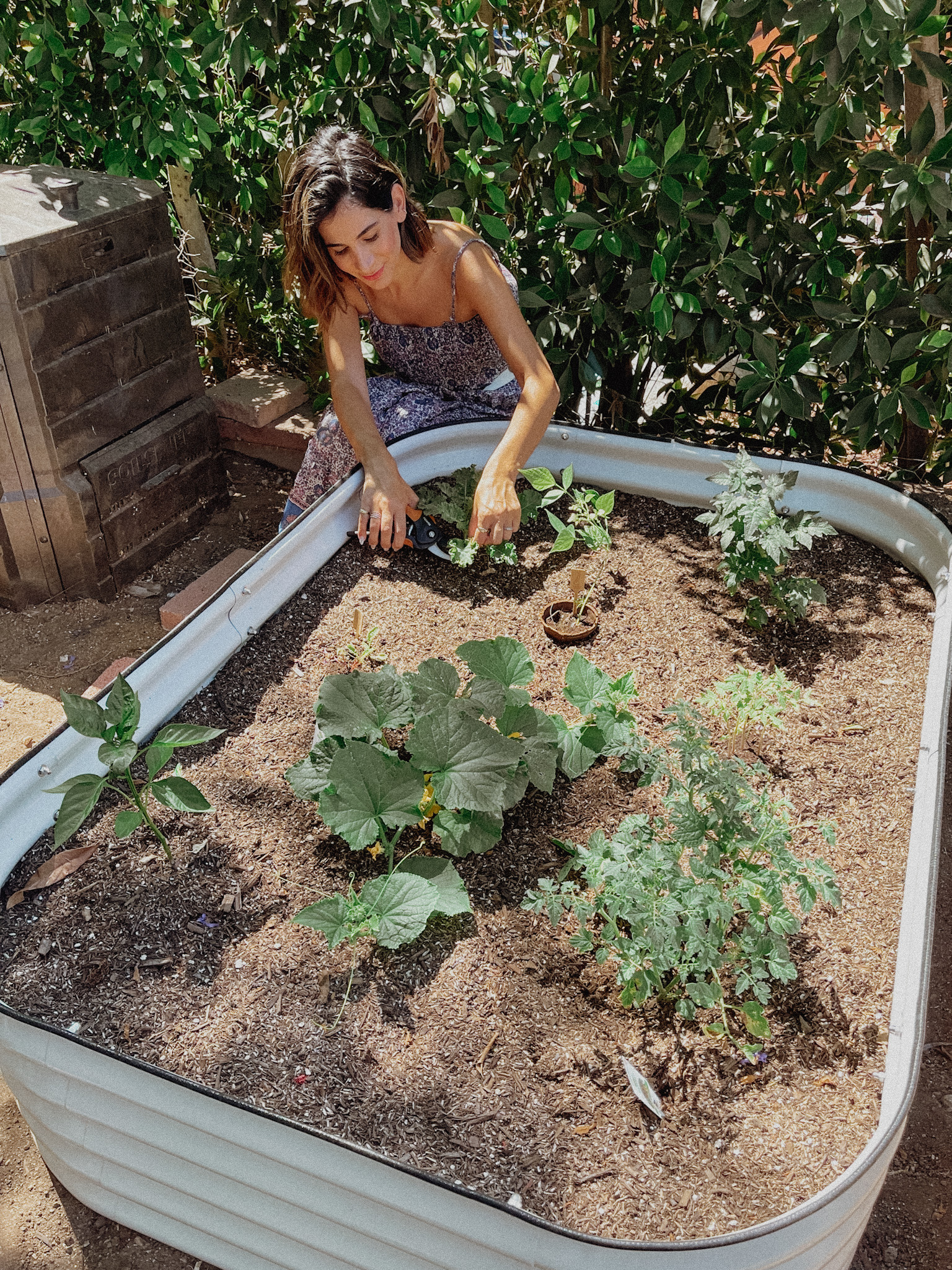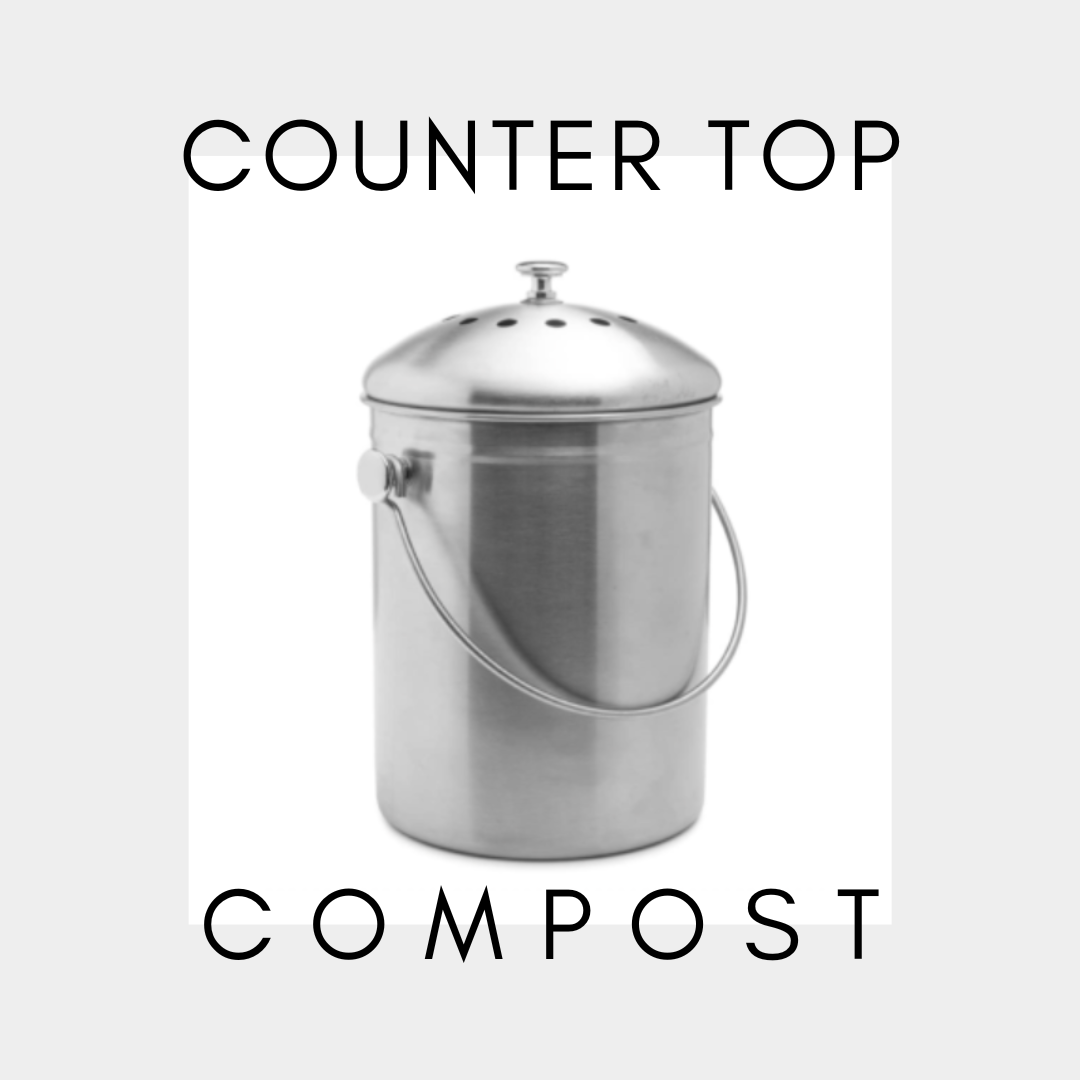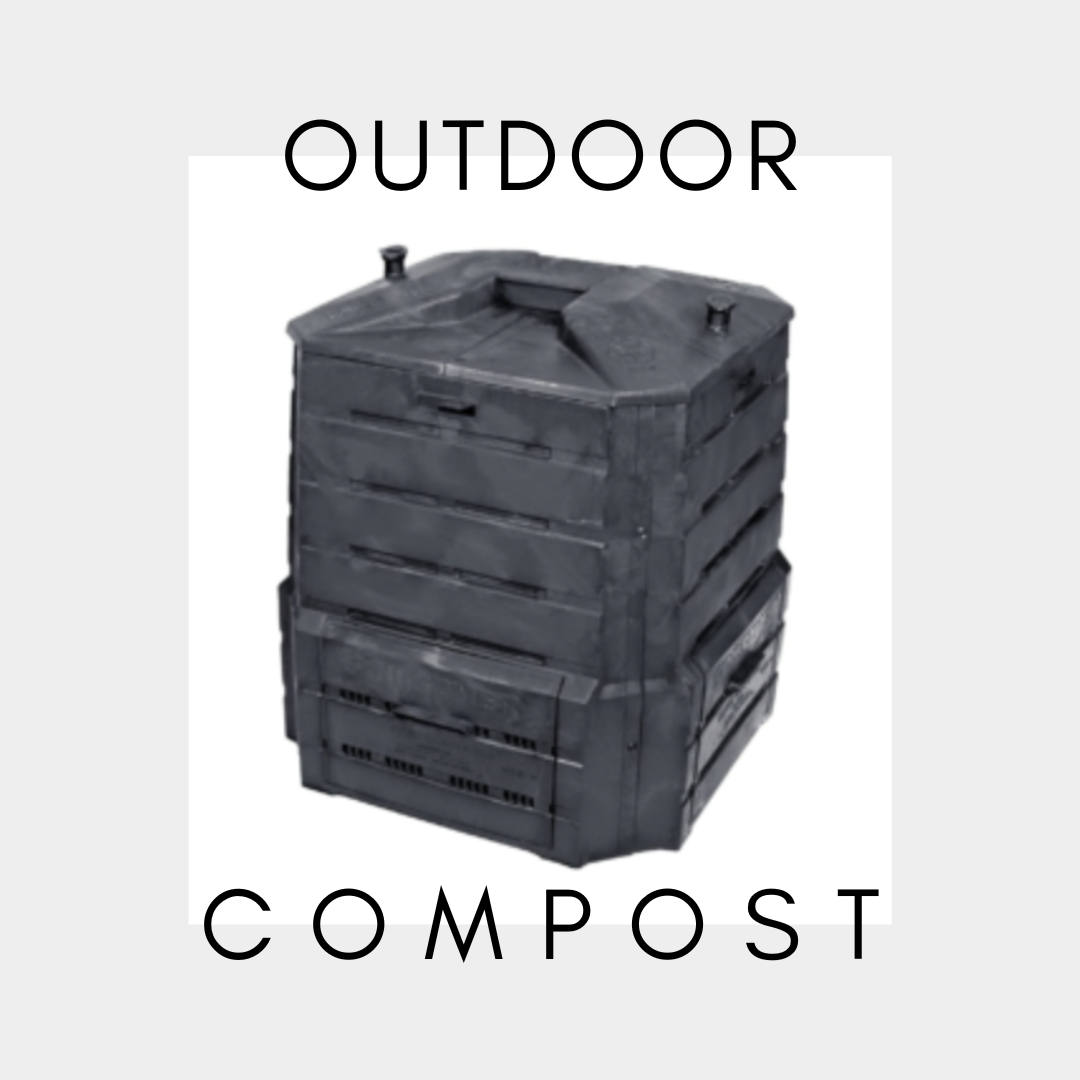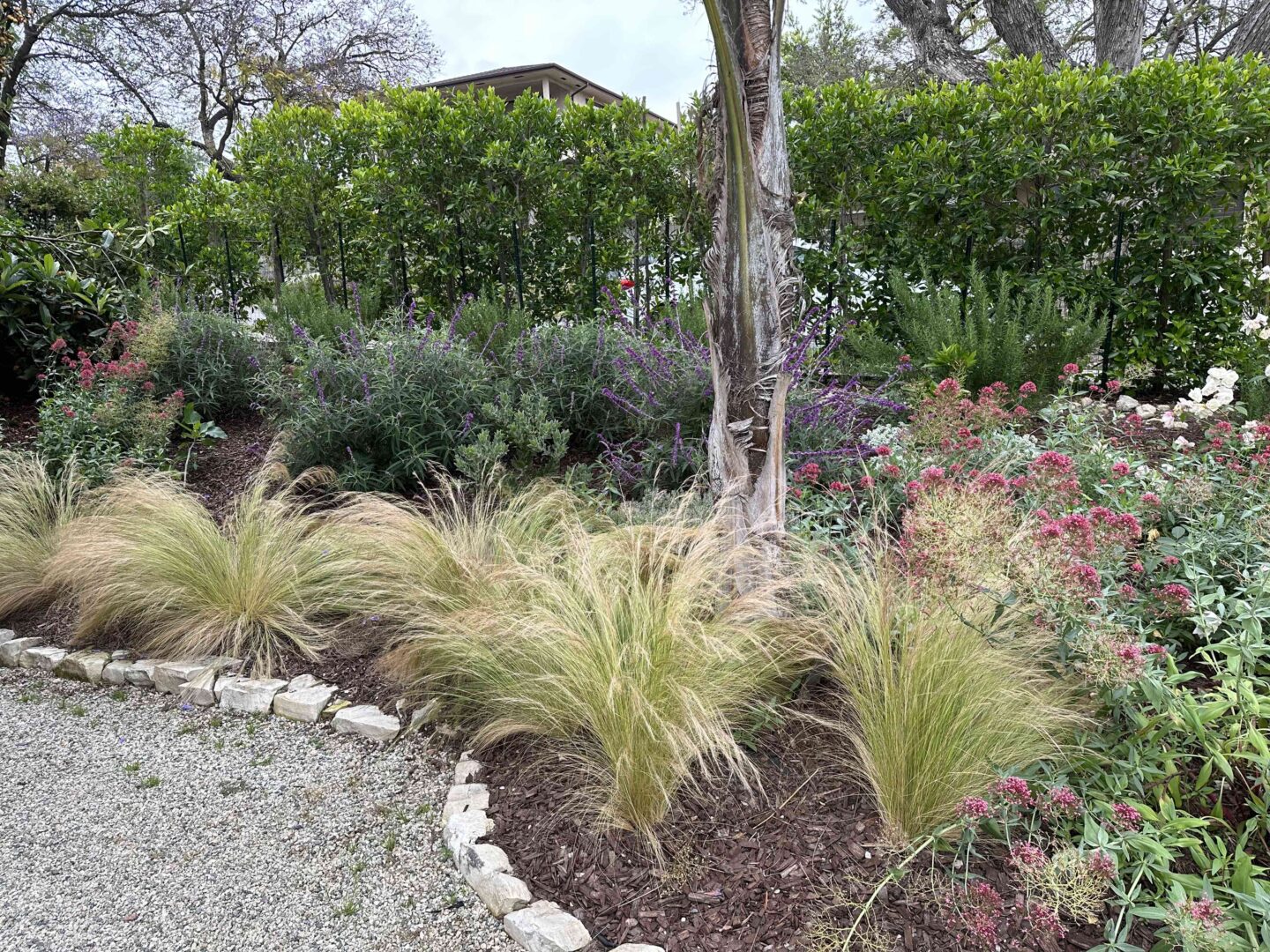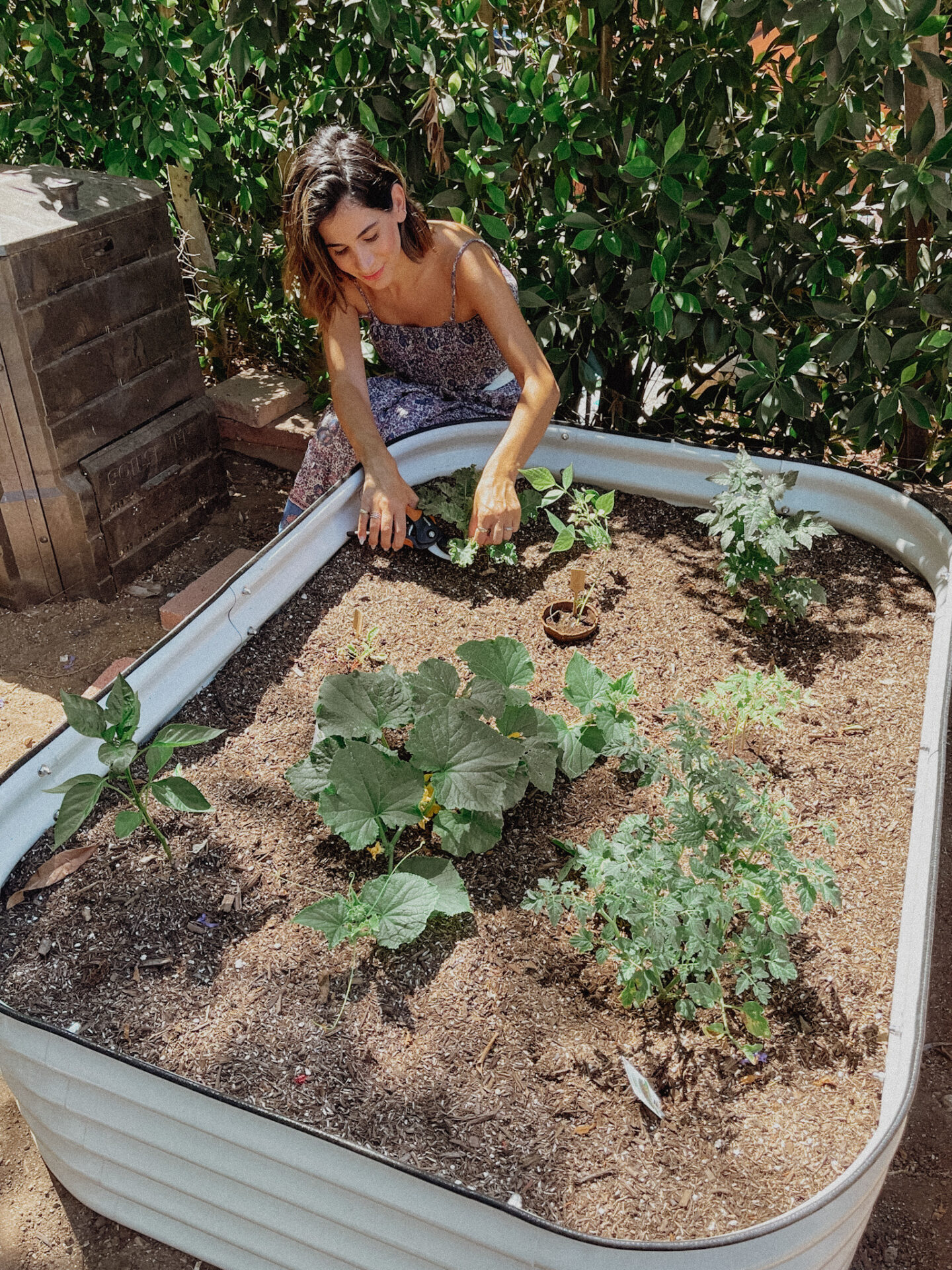
Composting is an excellent way to repurpose food waste while creating nutrient-rich soil for your garden. It’s not only good for the environment, but it’s also a fantastic hobby for those who love gardening. I picked up gardening when we bought our house and it’s a hobby I look forward to every day. With a variety of gardens in our yard space, we decided to get a compost bin to create nutrient-rich soil with the added bonus of being able to responsibly repurpose our food waste.
According to the EPA, about 8% of greenhouse gas emissions come from wasted food and roughly half of all food waste occurs during “the consumption stage,” meaning waste from food service and households. You can actively help reduce food waste by composting – plus you’re creating nutrient-rich soil for your garden. It’s truly one of the most sustainable changes to make in your life and it’s becoming easier and easier to compost in many parts of the country. Los Angeles just made it possible to compost along with your regular trash service so even if you don’t have the capacity or space for composting, you can compost your food waste and make impactful change! I’ll teach you everything you need to know about composting, including its benefits, how to compost, what to compost, and our own composting experience.
Benefits of Composting
Composting has several benefits. For starters, it’s a natural alternative to chemical fertilizers when applied to lawns and garden beds. Additionally, composting diverts up to 30% of household waste away from landfills, reducing landfill waste and increasing the longevity of landfills. When organic matter hits the landfill, it releases harmful methane gas as it decomposes, increasing global warming and climate change. Composting also introduces beneficial organisms to the soil, which help aerate the soil, break down organic materials for plant use, and ward off plant disease. Finally, composting creates rich humus for your garden, which adds nutrients to your plants and helps retain soil moisture.
What to Compost
Compostable items are divided into two categories: green/oxygen and brown/nitrogen. Green items are plant-based, wet materials, including fruit and vegetable scraps, grass clippings, plant trimmings, and weeds that haven’t gone to seed. Prepared foods and meals cooked without oils, dairy, or meat can also be composted. Brown items are dry plant material, such as dried leaves and twigs, straw, hay, or corn stalks, paper (newspaper, coffee filters, or paper tableware), sawdust, and corrugated cardboard. Meat and dairy products, fats, grease, lard, oils, and glossy paper or cardboard should not be composted. Maintaining a balance to your compost bin is key but trust me when I say, composting leaves a lot of room for error so don’t let it stress you out! You want to maintain a nice balance of wet and dry or green and brown materials and give it all a nice turn once a week.
How to Compost
Starting a compost pile is simple. Start by laying twigs or straw on the ground, a few inches deep. This will help with drainage and aid in aerating the pile. Next, add compost materials in layers, alternating between moist and dry. Moist ingredients include food scraps, tea bags, and seaweed, while dry materials include straw, leaves, sawdust pellets, and wood ashes. Add a nitrogen source to activate the compost pile and speed up the process. Nitrogen sources include fresh grass clippings, manure, and vegetable scraps. Every few weeks, give the pile a quick turn with a shovel to aerate it. Oxygen is required for the process to work, and turning “adds” oxygen. Once you’ve established your compost pile, add new materials by mixing them in, rather than adding them in layers. I will admit that we’re on the lazy side of turning over our compost bin an it’s doing great. I like to point this out because the process shouldn’t be stressful for you!
Our Composting Experience
We have a countertop compost bin as well as a larger compost in our front yard. The countertop compost is very convenient for discarding food waste and scraps on a daily basis. We have this one and absolutely love it! It has a carbon filter in the lid so it prevents any smells or flies. Both my mom and mother in law both told me they were so surprised there is zero smell in our kitchen because of our compost. We empty the countertop compost every 3 days when it gets full into the compost bin outside. Our larger compost is in the perfect spot in our front garden and we add to it every week from our smaller bin. We ensure we’re turning it over and keeping it balanced so we get the nutrient rich soil for our regular gardening.
Composting is an excellent way to reduce food waste and create nutrient-rich soil for your garden. It’s easy to get started, and with a few simple steps, you can create a sustainable and natural alternative to chemical fertilizers while reducing landfill waste.
Shop our vegetable garden here.
